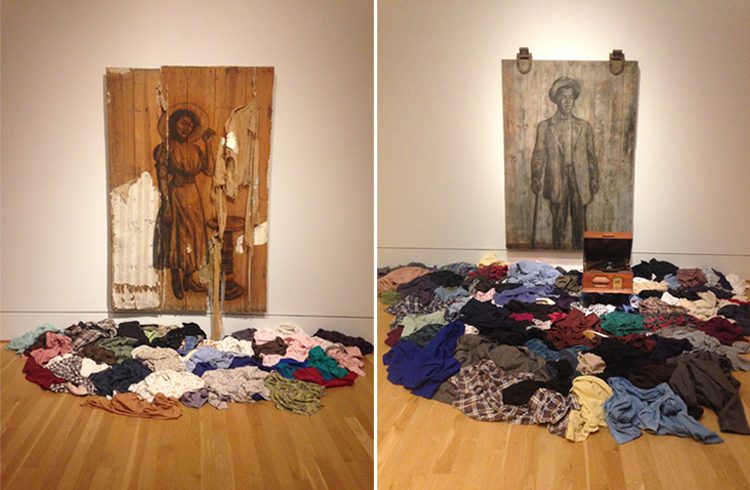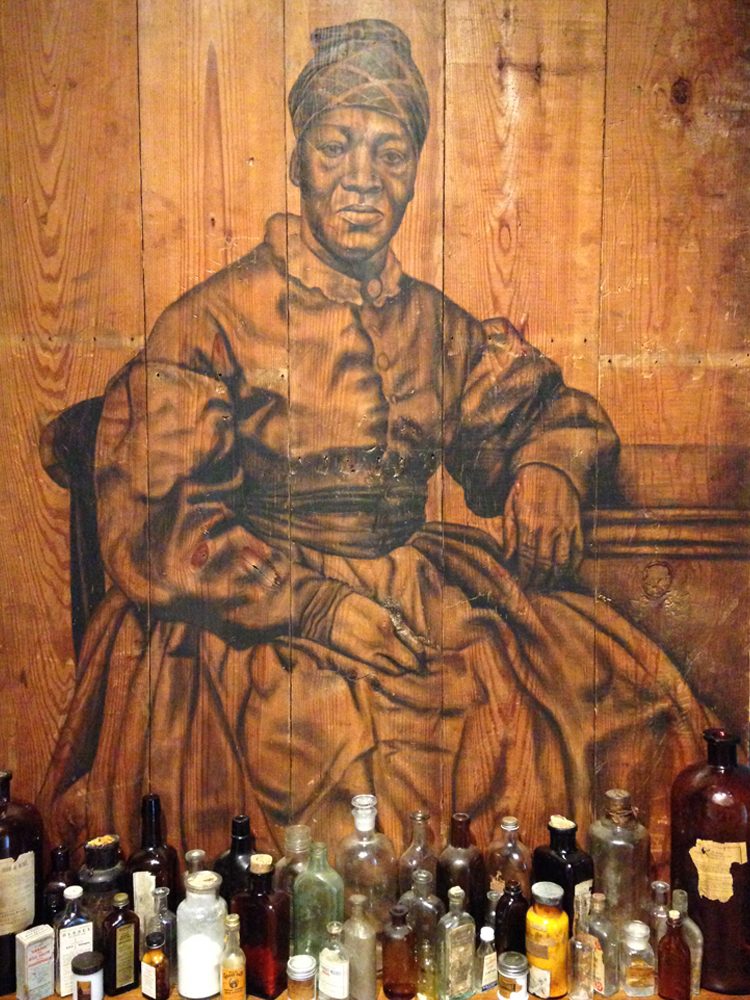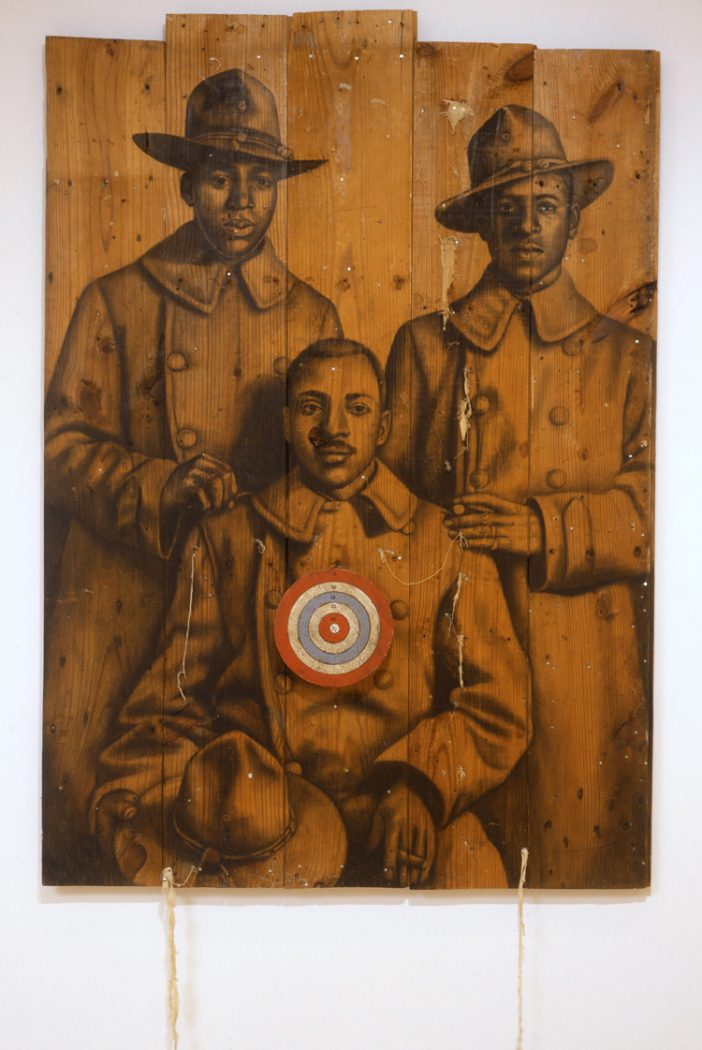
(left) Whitfield Lovell, Whispers—Mattie When you Marry, 1999. Charcoal on wood and found objects. Courtesy DC Moore Gallery © Whitfield Lovell and DC Moore Gallery, New York (right) Whitfield Lovell, Whispers—Rising River Blues, 1999. Charcoal on wood with found objects, 90 1/2 x 52 1/2 x 48 in. Courtesy DC Moore Gallery © Whitfield Lovell and DC Moore Gallery, New York
In Whitfield Lovell: The Kin Series and Related Works, the two tableaux pictured above (Mattie When You Marry at left and Rising River Blues at right) face each other on either end of a gallery. They were originally conceived as part of a larger installation that the artist developed in 1999 during a residency in Denton, Texas. Presented here, the single female and male figure represent the collective lives of Quakertown, the rural African American community that once thrived in the center of Denton from 1875 until 1924. In 1924, the residents were displaced when they were perceived as a threat to a nearby all white girls school. To help summon their memory, Lovell immersed himself in thousands of old family photographs from the Texas African American Photography Archive in Dallas.
The melodic sounds of “Rising River Blues” emanate from the phonograph you see in Rising River Blues and set the tone for the piece. The artist stimulates our sense of sound and sight with the textured layering of strewn clothes evocative of disembodied individuals, thereby inviting the viewer into a space that hovers between absence and presence.
Rising River Blues
Rising river blues, runnin’ by my door
Rising river blues, runnin’ by my door
They runnin’, sweet mama, like they haven’t run before
I got to move in the alley, I ain’t ‘lowed on your street
I got to move in the alley, I ain’t ‘lowed on the street
These rising river blues sure have got me beat
Mmm, mmmm, mmm, mmmm, hmmmm
Mmm, mmm, mmmm, mmm, hmmm,
Mmm, mmmmm
Come here, sweet mama, let me speak my mind
Come here, sweet mama, let me speak my mind
To cure these blues gon’ take a long, long time
–lyrics by George Carter, 1929
Whitfield Lovell: The Kin Series and Related Works is on view through Jan. 8, 2017.


